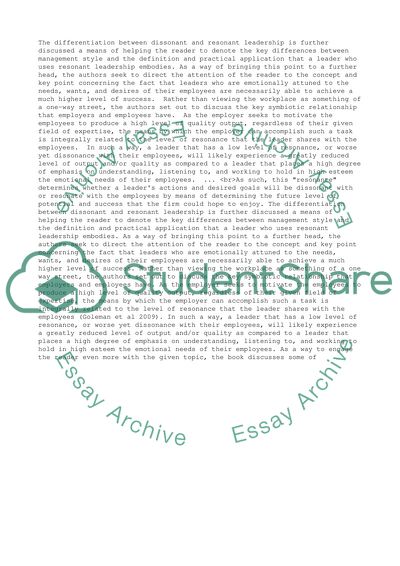Cite this document
(“Primal Leadership: Realizing the Power of Emotional Intelligence: Essay”, n.d.)
Retrieved from https://studentshare.org/management/1466668-primal-leadership-realizing-the-power-of-emotional
Retrieved from https://studentshare.org/management/1466668-primal-leadership-realizing-the-power-of-emotional
(Primal Leadership: Realizing the Power of Emotional Intelligence: Essay)
https://studentshare.org/management/1466668-primal-leadership-realizing-the-power-of-emotional.
https://studentshare.org/management/1466668-primal-leadership-realizing-the-power-of-emotional.
“Primal Leadership: Realizing the Power of Emotional Intelligence: Essay”, n.d. https://studentshare.org/management/1466668-primal-leadership-realizing-the-power-of-emotional.


